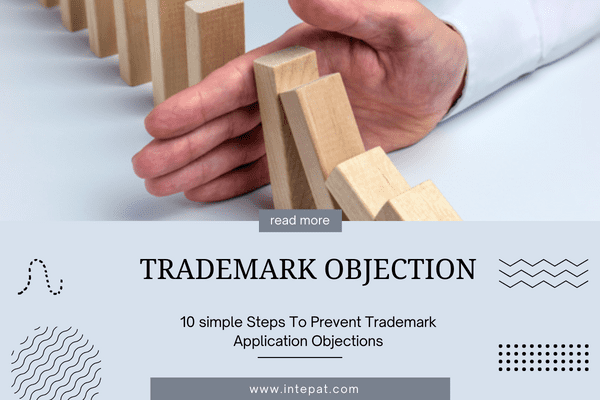It is a known fact that trademarks have become the most crucial part of a product’s success in today’s time. It is not an easy task to conceive a new idea and translate it into a form of a mark for registration. After doing all the brainstorming to arrive at a trademark, it would be a massive blow to all the efforts taken when objections are raised against your trademark registration application.
What are trademark objections?
When an application is filed for registration, the trademark registry office examines it. If the application has any error, then objections can be raised by the Examiner, and the applicant has to file a response to the examination report. The objections can be raised for one of the following reasons-
1. Incorrect usage of application forms
2. Error in applicant’s name
3. Failure to submit POA in case an agent applies on behalf of the applicant
4. Vague specification of goods or services
5. The deceptive marks are used
6. The mark that lacks distinctiveness is used
What can be done to prevent trademark objections?
Objections to trademarks are inevitable because they are not under the applicant’s control, and they may or may not happen. One can take a few measures to minimize the number of objections to your trademark registrations.
1. Conduct a thorough trademark search
This should be the first step that every proprietor must take before applying. The Trademarks Registry is handled by the Controller General of Patents, Designs, and Trademarks in India. The official website of the Controller provides a trademark search database. The database helps determine whether the mark entered already exists as a registered one or is similar to another. If there are any marks identical to the one you want to apply for, then drop that word and proceed to a new word. It is also suggested not to use abandoned words.
2. Use a distinct mark
Try to make your mark a distinct one. The goal should be to make it as different as possible from the rest. The possibility of a mark being objected to is also less when it is distinct.
3. Avoid deceptively similar marks
The registrar may not entertain the application if the mark is deceptively similar to the one that already exists as a registered trademark. The objective of conducting a trademark search is to see if there is any identical mark and to ensure that the mark is not deceptively similar to any existing ones, which may cause confusion among the public.
4. Avoid well-known marks
This is a strict rule. Never use any mark which is already a well-known one and is popular among the public. The registrar shall immediately refuse the registration.
5. Do not use common words
Certain words which are used in common jargon should be avoided. Example- If you want to register a wordmark for a school, you cannot register a trademark for words like ‘Education’ and ‘school.’ These are standard terms, and the application will be rejected for the same reason.
6. Coin a new word
This is the most sought-after method of ensuring that your wordmark is registered without any objections. The words should be unique and distinct, and it is suggested that you coin new words. Since you coin the words, no one can object to it unless it sounds similar to another registered one. It is your brainchild and is unlikely to be used anywhere else. It reduces the risk of objection.
7. Do not use names of geographical locations
This should be strictly avoided. You cannot apply for registering marks like ‘India,’ ‘Bangalore,’ etc. It is bound to be rejected.
8. Draft applications without any errors
When applying for registration, one should ensure that all the details are filled in correctly and that they are free from errors of all kinds. All reasons discussed initially may cause specific errors and should be avoided. This step is necessary because the trademark office examines the applications before publishing the mark for advertisement in the trademark journal. If there is any error, the registrar may ask for rectifications to be made to the application. This will lead to unnecessary delays in the process of registration.
9. Conduct additional searches specific to the field of operations
An example of the above criteria – If you are registering for a trademark concerning a mobile application, then it is suggested that you also conduct an app store search apart from the traditional trademark search to see if there are similar marks already in use.
10. Avoid any kind of offensive marks
If any mark is found offensive, then the registrar will refuse registration of the same. Thus, it is essential to avoid all types of offensive or controversial marks.
What to do if my trademark is objected to?
If a trademark is objected to, then make sure that you file a response to the objection raised, failing which the application shall be deemed abandoned. When the applicant sees the trademark status as “Objected,” then he has to file a response within the stipulated time which is one month. Failure to file a response leads to abandonment of the application.
How can Intepat help you?
Objections to trademark applications are not predictable, and it is a common phenomenon during trademark registration and can be easily tackled by an experienced attorney. The legal and technical team at Intepat is the best in the business regarding intellectual property services. The team is efficient and will ensure a hassle-free experience during the registration process. For more help, please contact us.




